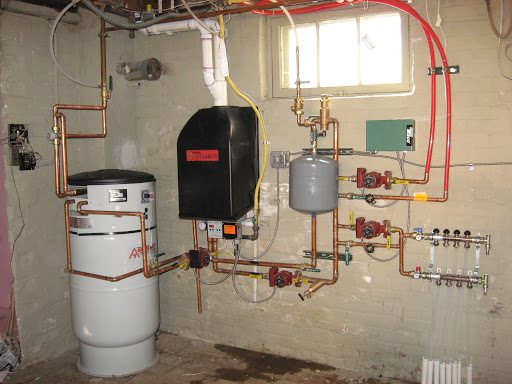How to Maintain Your Home's Hot Water System Functioning Well
How to Maintain Your Home's Hot Water System Functioning Well
Blog Article
We've noticed the article about What Kind of Maintenance Do Water Heaters Need? down the page on the net and felt it made perfect sense to discuss it with you here.

Hot water is vital for daily convenience, whether it's for a refreshing shower or cleaning meals. To guarantee your warm water system runs efficiently and lasts longer, routine maintenance is vital. This article gives functional pointers and insights on how to keep your home's hot water system to stay clear of disturbances and costly repairs.
Intro
Preserving your home's hot water system could seem challenging, yet with a few easy actions, you can ensure it runs smoothly for several years to find. This overview covers whatever from understanding your warm water system to DIY upkeep suggestions and recognizing when to contact professional help.
Relevance of Preserving Your Warm Water System
Routine upkeep not only expands the life expectancy of your hot water system yet likewise guarantees it operates effectively. Neglecting upkeep can lead to decreased performance, higher energy costs, and even premature failing of the system.
Indicators Your Hot Water System Requirements Upkeep
Knowing when your warm water system needs interest can protect against significant concerns. Look out for indicators such as irregular water temperature, weird sounds from the heating unit, or rusty water.
Comprehending Your Hot Water System
Before diving right into maintenance tasks, it's helpful to recognize the fundamental parts of your warm water system. Usually, this includes the hot water heater itself, pipes, anode rods, and temperature controls.
Regular Monthly Upkeep Tasks
Normal month-to-month checks can help capture minor problems before they rise.
Flushing the Water Heater
Flushing your hot water heater removes sediment buildup, enhancing effectiveness and prolonging its life.
Monitoring and Changing Anode Rods
Anode poles protect against rust inside the tank. Evaluating and changing them when worn out is critical.
Examining and Adjusting Temperature Setups
Adjusting the temperature level setups guarantees ideal performance and safety.
DIY Tips for Upkeep
You can do several maintenance tasks yourself to keep your warm water system in leading problem.
Looking for Leakages
Consistently check pipelines and connections for leaks, as these can result in water damage and greater costs.
Examining Pressure Alleviation Valves
Examining the stress safety valve guarantees it functions appropriately and stops too much stress buildup.
Protecting Pipelines
Protecting hot water pipelines decreases warmth loss and can conserve power.
When to Call an Expert
While DIY maintenance is helpful, some problems call for specialist experience.
Facility Issues Requiring Professional Help
Instances include major leakages, electrical problems, or if your hot water heater is constantly underperforming.
Routine Professional Maintenance Advantages
Expert upkeep can include detailed inspections, tune-ups, and making certain conformity with safety and security standards.
Verdict
Regular upkeep of your home's warm water system is necessary for effectiveness, longevity, and price savings. By adhering to these suggestions and recognizing when to seek expert assistance, you can guarantee a reliable supply of warm water without unexpected disruptions.
How to Maintain an Instant Hot Water Heater
Before tinkering with your hot water heater, make sure that it’s not powered on. You also have to turn off the main circuit breaker and shut off the main gas line to prevent accidents. Also turn off the water valves connected to your unit to prevent water from flowing into and out of the appliance. 2. When you’re done, you have to detach the purge valves’ caps. These look like the letter “T†and are situated on either side of the water valves. Doing so will release any pressure that has accumulated inside the valves while at the same time avoid hot water from shooting out and burning your skin. 3. When the purge valves’ caps are removed, you have to connect your hosing lines to the valves. Your unit should have come with three hoses but if it didn’t, you can purchase these things from any hardware or home repair shops. You can also get them from retail stores that sell water heating systems. Read the user’s manual and follow it to complete this task properly. When the hosing lines are connected, open the purge port’s valves. 4. You should never use harsh chemical cleaners or solutions when cleaning your unit. Make use of white vinegar instead. It should be undiluted and you’ll probably use about 2 gallons. 5. Now flush your water heater. This task should probably take about 40 minutes. We can’t give you specific directions for this because the procedure is carried out depending on the type, model and brand of your heater. With that being said, refer to the user’s manual. 6. When you’re done draining the unit, you have to turn off the purge port valves again. Remove the hosing lines that you earlier installed on each of the water valves. Put the valve caps (purge port) back in their respective places and be very careful so as not to damage the rubber discs that are found inside these caps. 7. Now that everything’s back in place, check your user’s manual again to find out how to reactivate your water heating system. 8. Once it is working, turn one of your hot water faucets on just to let air pass through the heater’s water supply pipes. Leave the tap on until water flows smoothly out of it. https://www.orrplumbing.com/blog/2014/september/how-to-maintain-an-instant-hot-water-heater/

We were brought to that write-up on Tips on Maintaining a Water Heater from someone on our other web address. Are you aware of somebody who is inquisitive about Water Heater Maintenance Tips You Can't Afford to Forget? Be sure share it. We enjoy reading our article about How to Maintain Your Water Heater & Prolong its Life.
This Page Report this page